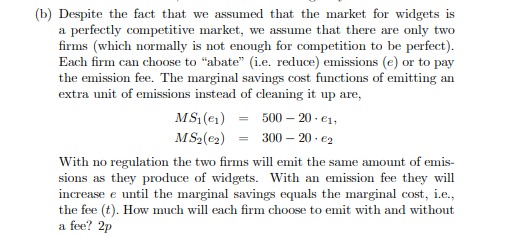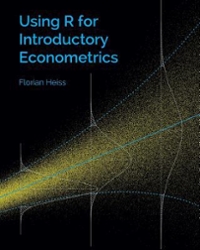Environmental Economics:
1. (a) Consider a market for "widgets", which is characterized by perfect competition; the market demand curve is given by, PP = 500 - 5 . Q and the market supply curve by, PS = 100 + 5 . QU. Widget-production causes a damages to outside parties (household and firms); total damages depend on output (Q) of widgets according to. D = 100 . Q. What is the marginal private cost of producing widgets? What is the marginal social cost? Explain the difference. Ip (b) If the market for widgets is unregulated, how many widgets are pro- duced? What is the market price lp(b) If the market for widgets is unregulated, how many widgets are pro- duced? What is the market price lp(c) At the unregulated market equilibrium, what is the consumers' and producers' surpluses? What is the total damage? What is the total surplus on this market? 1.5p(d) What is the Pareto-efficient level of output? Discuss how that level could be attained. What price would consumer pay, what price would producers receive? What would the consumers' and producers' sur- pluses be at this level? What would the total damage and total surplus be? By how much does the total surplus change given that the appropriate action has been taken by the authorities. 2p3. (5 points) When environmental problems started to be taken serious by many coun- tries, and specialized government environmental protection agencies (EPAs) were set up. the initial approach was to try to solve the problem by direct regulation. In practice this meant that the EPA introduces different types of environmental standards. (a) If the environmental problem is associated with emissions into the air, because a certain type of material input is used in the production process which leads to such (damaging) emissions, the natural thing to do for the EPA is to force firms to reduce their emissions. By defining a so called input-standard the EPA regulates the amount of emission per unit of input. But this may not be the best regulation to use. Discuss what other type of standard that the EPA can use and why it may be better.(b) Direct regulation, or "command-and-control policies", have been pop- ular with regulators and also (relatively speaking) with the regulated firms. However, economist have long pointed out that they have certain drawbacks compared to alternative solutions to an environ- mental problem. Discuss the drawbacks with comman-and-control policies.4. (5 points) Let's go back to question 1 and the market for widgets. Assume that each unit of output also leads to one unit of emission. The EPA have solved question 1 so they realize that too much output is produced, or rather that the production of widgets results in too much emissions. They decide to introduce a system of emission charges (or -fees) per unit of emissions, which we denote by t. (a) What level of t would achieve an efficient amount of emissions? Ip(c) What is the cost of this environmental policy for each of the two firms? What is the cost to society and what is the net benefits? Discuss why the cost to society is not equal to the cost to the firms. 2p(b) Despite the fact that we assumed that the market for widgets is a perfectly competitive market, we assume that there are only two firms (which normally is not enough for competition to be perfect). Each firm can choose to "abate" (i.e. reduce) emissions (e) or to pay the emission fee. The marginal savings cost functions of emitting an extra unit of emissions instead of cleaning it up are, MS1(e1) = 500 - 20 . 61. MS,( e2) = 300 - 20 . 62 With no regulation the two firms will emit the same amount of emis- sions as they produce of widgets. With an emission fee they will increase e until the marginal savings equals the marginal cost, i.e., the fee (t). How much will each firm choose to emit with and without a fee? 2p















